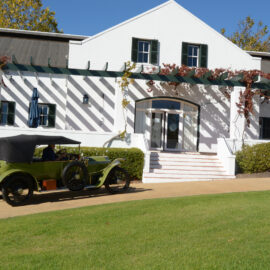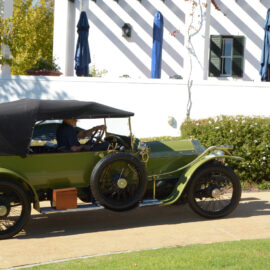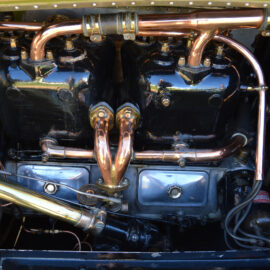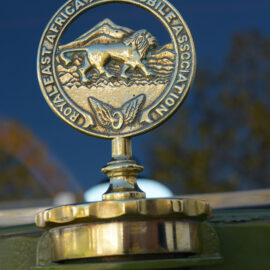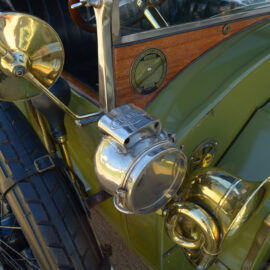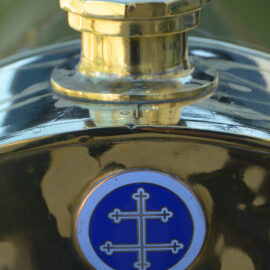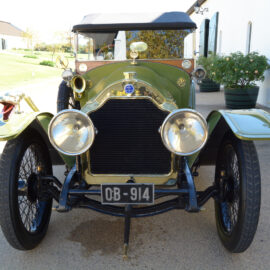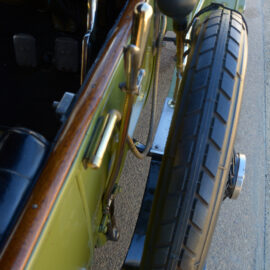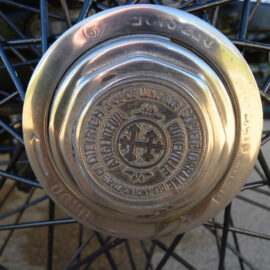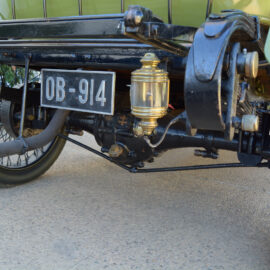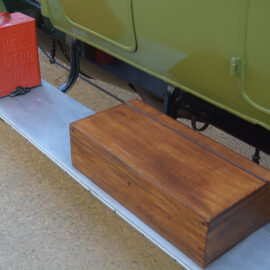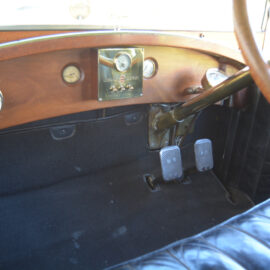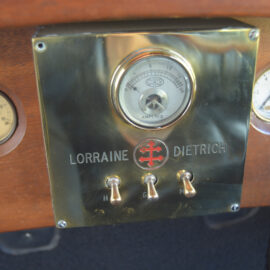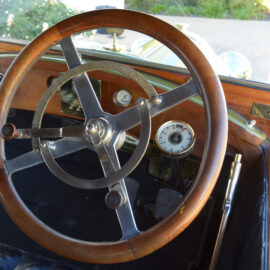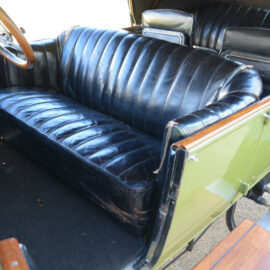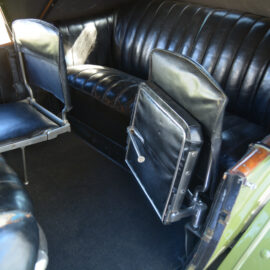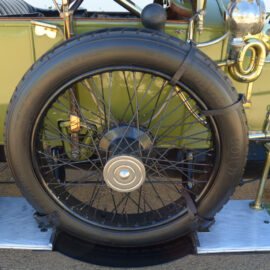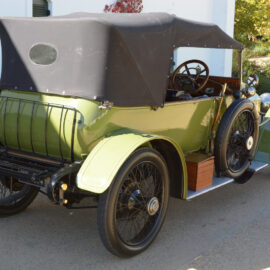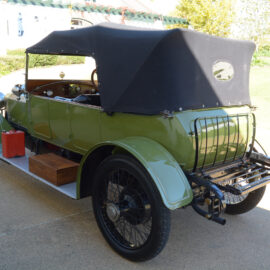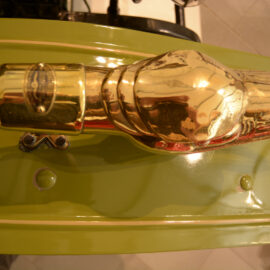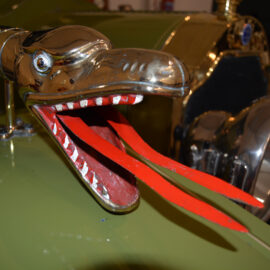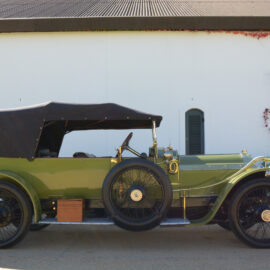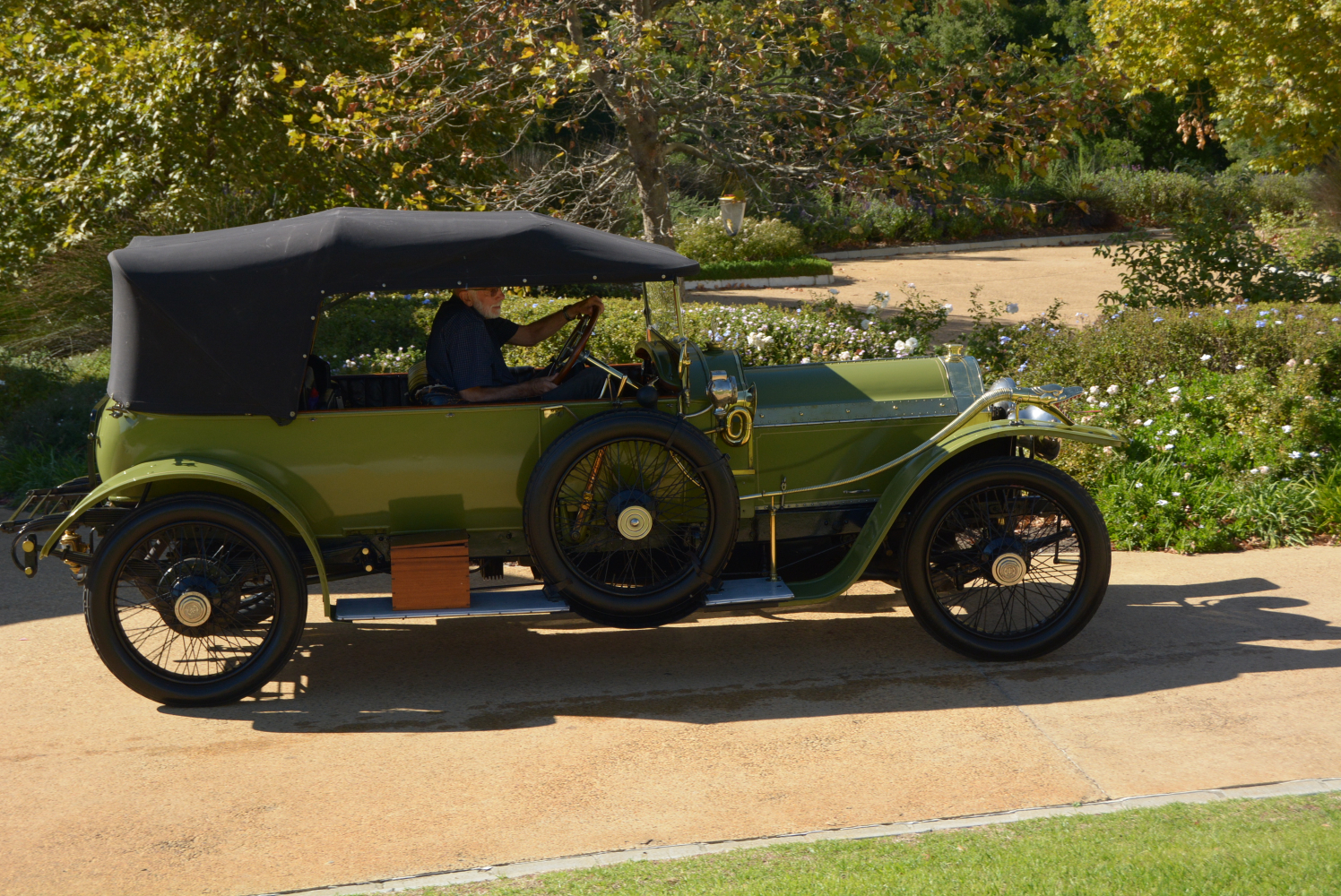
01 Nov Collection In Action: Lorraine-Dietrich
The history of Lorraine-Dietrich is jumbled and relatively short-lived, but the cars certainly impressed. FMM’s century-old tourer is a fine example with quite a history, as Mike Monk explains…
One of the pleasures in researching veteran and vintage cars is that there is almost invariably a fascinating story to tell, some easy to fathom, others a lot less straightforward. While early history of a particular marque is occasionally sketchy and sometimes contradictory, a specific model’s ownership record is more often than not vague to say the least, but when pieces do fit together, the resultant tale paints a fascinating picture of times gone by. Like the background to this prestigious 100-year-old French Lorraine-Dietrich.
The background to Lorraine-Dietrich automobiles began in 1896 when, typical of many companies that had firmly established themselves in the wake of the industrial revolution, railway equipment manufacturer Société Lorraine des Anciens Etablissments de Dietrich and Cie (otherwise known as De Dietrich et Cie) founded in 1864 by Jean de Dietrich, decided to diversify its engineering expertise into the manufacture of the horseless carriage. De Dietrich et Cie had two plants, one in Niederbronn-les-Bains in the Alsace region and the other in Lunéville, Lorraine, a region bordering Belgium, Luxembourg and Germany. The managing director of the Lorraine factory was Baron Adrien de Turckheim, who bought the rights to a design by pioneering automobile manufacturer Amédée Bollée and production began of the car, which was driven by a front-mounted, horizontal two-cylinder engine, sliding clutches and a belt drive. The car also boasted a folding roof, triple headlamps and a plate glass windscreen.
More advanced models soon followed and the company recognised that motor sport was a means to promote the brand. So, in 1898 De Dietrich entered a four-cylinder Torpilleur (Torpedo) racer, which boasted independent front suspension, for the Paris-Amsterdam Trial where it finished third despite an accident along the way. Famous driver Charles Jarrott finished third in the 1903 Paris-Madrid Rally, and in 1905 a De Dietrich entered the Gordon Bennett Cup race powered by no less than a 17 012 cc four-cylinder engine, where it finished sixth with an average speed of almost 70 km/h over a 550-km route. Led by ace works driver Arthur Duray, De Dietrichs achieved a 1-2-3 in the 1906 Circuit des Ardennes, and in 1923 three cars entered the first-ever Le Mans – one car finished 8th, another 19th (out of 30) while the third retired. In 1925-26, Lorraine-Dietrich became the first marque to win the 24-Hour classic twice, and in successive years. But this is getting ahead of this story…
In 1902, De Dietrich hired 21-year-old Ettore Bugatti who designed a 24/28 hp model, driven by a four-cylinder engine with four-speed transmission, followed by a 30/35 hp, but he left the company after just two years in its employ. Also in 1904, the Niederbronn factory ceased automobile production, although it sold Turcat-Méry cars badged as a De Dietrich. This came about as a result of Baron Turckheim’s association with brothers-in-law Léon Turcat and Simon Méry, engineers who had started their own motor manufacturing business in 1899 and sold cars with the slogan ‘The Car of the Connoisseur’.
However, the Lunéville facility continued, and cars produced there carried the heraldic cross of Lorraine on the grille to distinguish them from the Alsace models. In 1907, Lorraine-Dietrich briefly took control of Isotta Fraschini, as well as taking over the British company Ariel Mors Limited, but the amalgamation survived for little more than a year.
Nonetheless, for 1908, De Dietrich offered a line of four-cylinder, chain-driven cars: the 18/28hp, 28/38hp, 40/45hp, and 60/80hp, and a six-cylinder 70/80hp. This was the year that the name changed to Lorraine-Dietrich – as did that of the aero-engine division that had been created within the company a few years earlier.
The Lorraine-Dietrich featured here was built in 1911 and fitted with a convertible body by Cockshoot of Manchester, England. Joseph Cockshoot and Co was established in 1844 and steadily earned a reputation for high quality craftsmanship and elegant design winning numerous awards. In 1903 Cockshoots turned its attention to motor car bodies and the first agencies with which it became involved with were the Stanley Steam Car, Rex and Velox, followed by Daimler, Delaunay-Belleville, Léon Bollée, Lorraine-Dietrich, Mercedes-Benz, Panhard, Renault, Rolls-Royce, Sunbeam, Talbot and Wolseley.
This car was reportedly a wedding gift to a keen hunter who often went on safari in East Africa. He was also an enthusiastic motorist and a member of the East African Automobile Club, the club’s badge still adorning the car’s scuttle. It was later purchased by diamond mining magnate Charles Newberry, who had emigrated from the UK in 1864 and worked in establishing Kimberly’s ‘big hole’ to the point of becoming a shareholder in Cecil Rhodes’ Central Mining Company, which later developed into De Beers.
With his hard-earned wealth, Newberry moved to Clocolan in the Eastern Free State and established a classic English country estate that he called Prynnsberg Manor. He and his family acquired many expensive objects d’art along with some prestige automobiles including this Lorraine-Dietrich. But the Newberry empire fell apart in quite a dramatic way and both the property and most of its contents were either sold off or fell into disrepair.
The Lorraine-Dietrich was saved by Durban enthusiast George Huddlestone who set about restoring the car, but he had little info to work from. By this time virtually all of the Lorraine-Dietrich archive material had disappeared but Huddlestone was fortunate in obtaining information from the former workshop chief who had worked on practically all of the cars during his 57-year tenure at the company. Sadly, the correspondence on file between them does not reveal his name, but the 75-year-old displayed an extensive knowledge of the cars. He confirmed the car as a 1911 Type HJ 28hp model constructed at both the Lunéville plant and a new factory in Argenteuil, Seine-et-Oise, which became the company’s headquarters after WW1. The engines were made and tested at the former before being sent to the latter to be mated with the gearbox then fitted to a chassis, which was available with either a chain or Cardan shaft drive to the rear axle. The engine is a four-cylinder – two twin-cylinders in line – with a bore/stroke of 110×150, giving a capacity of 5 700 cc. The gearbox is a four-speed and drive is via a Cardan shaft. Brakes are fitted to the rear wheels only and the wire-spoke wheels are shod with 880×120 Dunlop Cord tyres.
Once restored and resplendent in its burgundy paintwork, Huddlestone used it in many social and competitive events before being persuaded to part with the car by another of South Africa’s eminent collectors, Waldie Greyvensteyn. Waldie had long wanted to own the car and continued to put it to good use before he, too, opted to restore it. The result is what you see here, now painted in a more dramatic shade of green and sporting an enormous, patented Boa Constrictor horn with its head – complete with forked tongue – mounted on the front mudguard and its flexible pipe tail extending to the bulb mounted just to the side of the windscreen. A quaint throwback to the car’s early safari exploits.
Waldie’s son Rudi inherited his father’s passion for old cars and he also kept the car active before it was eventually sold to the Franschhoek Motor Museum, where it is often put on public display. After topping-up the fuel system and setting the ignition, the starting handle was given some muscle-testing twirls – compression was remarkably high – the engine coughed into life with a determined beat that rocked the vehicle on its stand before setting out around the museum’s grounds under warm Autumn sunshine. The exterior and the stout gear lever are positioned alongside each other either side of the bodywork. The driving position is cramped, especially for my 1,9-metre long-legged frame, but the clutch action is fine and with first engaged – pull back for first and third in the well-defined H-gate – the Lorraine-Dietrich pulls away with no fuss.
It takes quite a heave on the sturdy, wood-rimmed multi-function steering wheel (there is nothing new in the auto world…) to manoeuvre the car at anything up to brisk walking pace but the effort lessens noticeably as speed rises. Selecting fourth brings about a change of character, progress suddenly becoming a more relaxed affair affording the opportunity to take in the scenery and enjoy the sights, sounds and smells of travel, veteran style. Effective braking demands anticipation and a hefty shove on the right-hand pedal (the accelerator is in the middle). The mini-sofa-like front seat is comfortable while at the back there is a similar padded and pleated leather bench, along with a pair of taxi-like jump seats.
By 1914, all Lorraine-Dietrichs were shaft-driven and built at Argenteuil. After WW1, the company recommenced manufacture of automobiles and aero engines. Following the De Dietrich family selling its share in the company, it became known as simply Lorraine from 1928 but automobile production had become unprofitable: the 20CV model was not a success. In 1930 De Dietrich was taken over by the Société Générale Aéronautique, and the Argenteuil plant was converted to making aircraft engines and six-wheel trucks. By 1935, Lorraine-Dietrich cars ceased to exist and it is sad that so little of the company’s history has survived, but at least we can appreciate the cars that made a significant contribution to the development of the French automobile industry.
FMM’s 1911 Lorraine-Dietrich is currently on view in Hall A.




